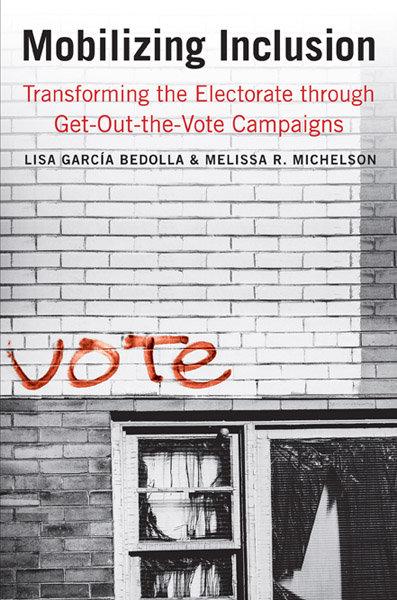Lack of Relevant Issues Affecting Voter Turnout
Lisa Garcia Bedolla—
If voters of color don’t vote on Tuesday, don’t be surprised.
The New York Times recently published a story on the dramatic advances in campaign data analytics since the 2008 election. According to the Times, “modern political campaigns home in on their key voters with drone-like precision, down to the smallest niche—like Prius-driving single women in Northern Virginia who care about energy issues.” The problem, they go on to say, is that campaigns do not have enough messages for their voter targets, and therefore their “ability to target has outstripped their ability to create” advertisements.
Do we really believe that the Democrats are in trouble this cycle because Prius-driving single women in Northern Virginia who care about energy issues are not supporting them? Or is it because of the hundreds of thousands of African American and Latino voters in Virginia who feel alienated from the party this campaign cycle? Have the parties become so enamored of these campaign technologies that they are not focusing on the voters who got their candidates elected in the first place? From my experience in this current cycle, I believe the answer is yes.
I have spent the 2014 electoral cycle working with a number of community organizations in California who work to turn out low-propensity voters of color. I have also spoken to many Democratic campaign consultants working at the local, state, and national levels. What has struck me most is the disconnect between what these organizations are hearing from voters on the ground and what the consultants are saying behind the scenes. Every Democratic campaign consultant with whom I have spoken has been wringing their hands about the fact that voters of color are not going to turn out in 2014. When making this complaint, they seem to assume that these voters’ lack of turnout in this election will be the product of some individual-level pathology, completely divorced from the electoral process. They assume that campaigns, and the policies they advocate (or not), do not matter. But they do.
What the organizations I work with know is that they have spent this cycle working hard to convince voters of color that this election is relevant to them, and that these candidates deserve their votes. This is especially challenging in Latino communities, where voters understand that President Obama went back on his promise to provide administrative relief on immigration because he decided that the Latino vote could be risked this cycle, given its relatively small potential impact in the states expected to decide the fate of the Senate. Within that context, why would Latino voters want to turn out to elect Democratic candidates at any level of government? Why would they think that their vote and/or voice matters, given the most powerful man in the world claimed not to be able to follow through on his stated commitment because of factors “outside of his control”?
A similar question could be asked about all the Democratic U.S. senatorial candidates in southern states who are hoping that African American voters will turn out at high levels but who are working to distance themselves from President Obama. Why do they expect an African American voter to be excited to support them if they cannot publicly support our nation’s first Black president or his policies?
It is true that political campaigns have developed new advanced ways to target particular voters. But what is also true is that, with a few exceptions, neither party in this election is targeting voters of color in a substantively meaningful way, advocating policy programs and/or policy positions that are designed to directly affect these voters’ needs. (I should note that the Abrams campaign and others in Georgia, along with community organizations in California, Colorado, Florida, and other states are engaging in this type of targeted, relevant outreach). If more political entities invested this kind of work, it would make a difference. In-person mobilization campaigns targeting low-propensity voters of color are quite effective—especially when they are locally based and focused on the issues that matter to these voters. Voters of color can be mobilized if campaigns, and the policies their candidates advocate, are designed with their needs in mind.
It is time for us to stop talking about voter turnout among youth, the poor, and voters of color as something that just “happens” or doesn’t each electoral cycle. These Americans are not stupid. They know when politicians are speaking to them and when they are not. This campaign cycle, politicians have not been. So if these voters choose to sit out on November 4th, it is not because they are pathological. It is because neither political party has been bothering to speak to them, or to address the real, pressing concerns that affect their day-to-day lives.
Lisa Garcia Bedolla is Chancellor’s Professor of education and political science at the University of California, Berkeley. She is the author, with Melissa R. Michelson, of Mobilizing Inclusion:Transforming the Electorate through Get-Out-the-Vote Campaigns.
Further Reading:





